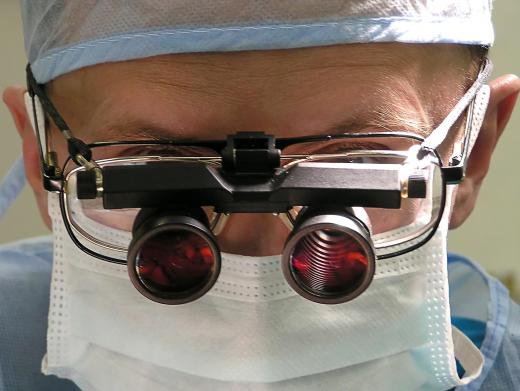Optical glass is a specialty glass product which is designed for use in optical devices such as telescopes, binoculars, eyeglasses, and so forth. This glass is formulated very precisely so that its properties are known, and it must be handled with care to ensure that it is free of impurities and produced in the right conditions. High quality optical glass can be quite expensive, as it requires a great deal of work to produce, and some of that work must be done by hand, especially in the case of custom pieces.
People have been exploring this type of glass since at least the 1600s, when glass workers began refining existing techniques to create glass which could be used to create lenses. These early lenses were used in simple microscopes and corrective vision devices. While the quality of this glass was not very good when compared to modern products, it did establish the fact that glass had a range of potential uses, and that refinement of glass making techniques could result in even better lenses and optics.

A number of things go into the construction of optical glass. The components of the glass must be carefully controlled, to ensure that it has the right balance of minerals, and it must be manufactured in environments where the temperatures can be very precisely regulated. Optical glass may also require special tempering during the manufacturing process, with the goal being a clear glass with a high refractive index. The precise parameters for the glass vary, depending on how it is being used.

Once the glass is made, it can be cut and ground into lenses for various applications. Lensmaking is a very precise art which was once accomplished entirely by hand, with some modern facilities using lasers to produce very reliable and precise lenses. Depending on how the lens is cut and ground, it will behave in different ways, allowing it to be used to correct vision, take photographs, or scan the heavens to look at the stars.

Some people refer to optical glass as precision or technical glass, referencing the fact that a great deal of skill is involved in its manufacture. Glass making companies which make optical glass can command a very high price to their products, as can companies which grind lenses. Various alternatives to this glass, such as specialty plastics have been explored, but for some applications, glass really is the best material to use.
Ever since she began contributing to the site several years ago, Mary has embraced the exciting challenge of being a About Mechanics researcher and writer. Mary has a liberal arts degree from Goddard College and spends her free time reading, cooking, and exploring the great outdoors.

